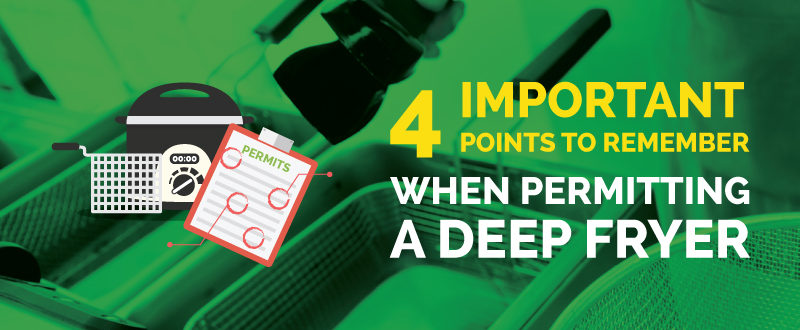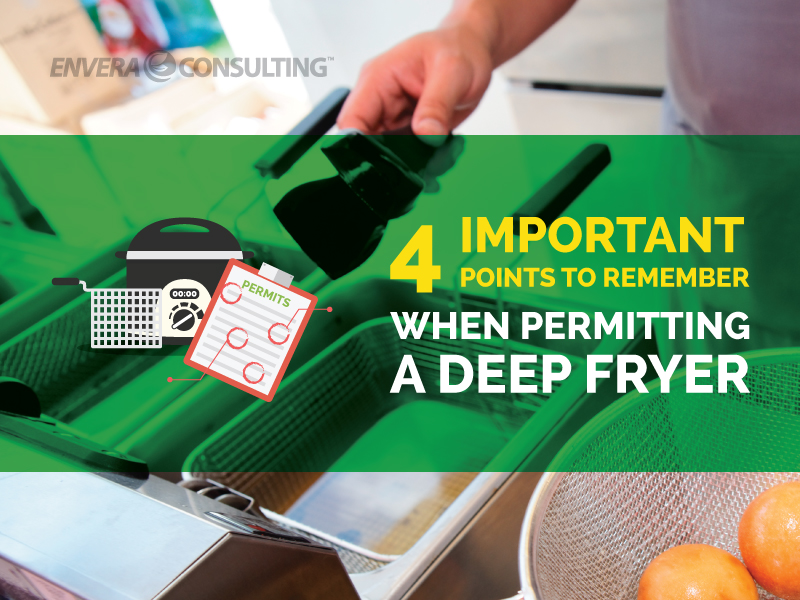

Despite the related health implications of deep-fried foods, I’m an avid churro lover. Give me a churro and I’m a happy guy. But permitting a deep fryer to make those cinnamon-coated rods of heaven has its challenges, at least in Southern California, which falls under the jurisdiction of the South Coast Air Quality Management District (SCAQMD). If you’re thinking of installing a deep fryer in your bakery or restaurant, here are some points you need to know before starting the permitting process.
1. Emissions
Emissions from a deep fryer consist of two types: particulate matter (oil droplets) and volatile organic compounds (VOCs), which are created as the oil heats up and vaporizes. These emissions and their profiles can change depending on such factors as the oil, temperature, what is being fried, and the deep fryer itself.
The emission profile of a deep fryer is highly variable, which can make it difficult to quantify. When a deep fryer is issued a permit, it’s quite common to just go with the default emission factor. (See our post on “Where to Find Emission Factors to Estimate Air Emissions.”) But because default emission factors have a wide range of variability, you want to be sure you understand your deep fryer’s emissions profile before you even start the permitting process. This means you’ll have to look through your records and engineering documents, and you may even have to conduct emission measurements to get the data.
2. Best Available Control Technology (BACT)
Once you understand the emission profile of the deep fryer, you can determine if the fryer needs Best Available Control Technology (BACT), which is required by some equipment under the federal Clean Air Act. In Southern California, you’ll need BACT if your VOC and particulate matter emissions are more than one pound a day. Required BACT for a deep fryer is usually either an after burner or thermal oxidizer (a piece of combustion equipment that incinerates the process stream). Because both of these BACTs can be expensive, depending on size and airflow rate, check if your deep fryer is required to have them before you make your purchase. The cost alone could convince you to abandon your churro-making venture.
3. Source Tests
The permitting process also requires that a source test be performed. In almost every case that we’ve seen here at Envera, when a permit is issued for a deep fryer, it contains a permit condition that states a source test must be conducted before the final permit can be released. This can become problematic if your emission assumptions (see point #1) were off and the source test indicates that actual emissions are higher than the limitations dictated by the SCAQMD. So you want to be sure that all your emission calculations/assumptions are as accurate as can be so you don’t have a rude surprise when the source test is conducted. (“Sorry, buddy. No churros for you!”)
4. NOx Limits
In Southern California, the emissions from the burner that heats the oil used to fry those super-tasty churros can be subject to very stringent nitrogen oxide (NOx) limits. Currently, these limits are thirty parts per million, corrected to three percent O2. If you’re buying a new deep fryer, I highly recommend that you ask your vendor to provide an emissions guarantee for the burner. That’s arguably the best way to ensure you can meet the SCAQMD’s emission limit. If that’s not possible, you can use the default emission factor or, for more accuracy, conduct a source test.